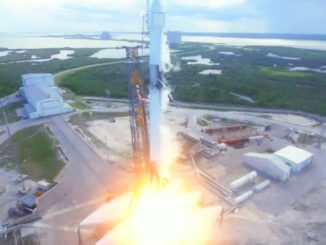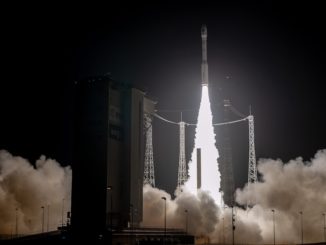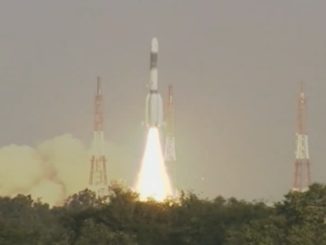EDITOR’S NOTE: Updated at 9 a.m. EDT (1300 GMT) on March 14 with new weather forecast.
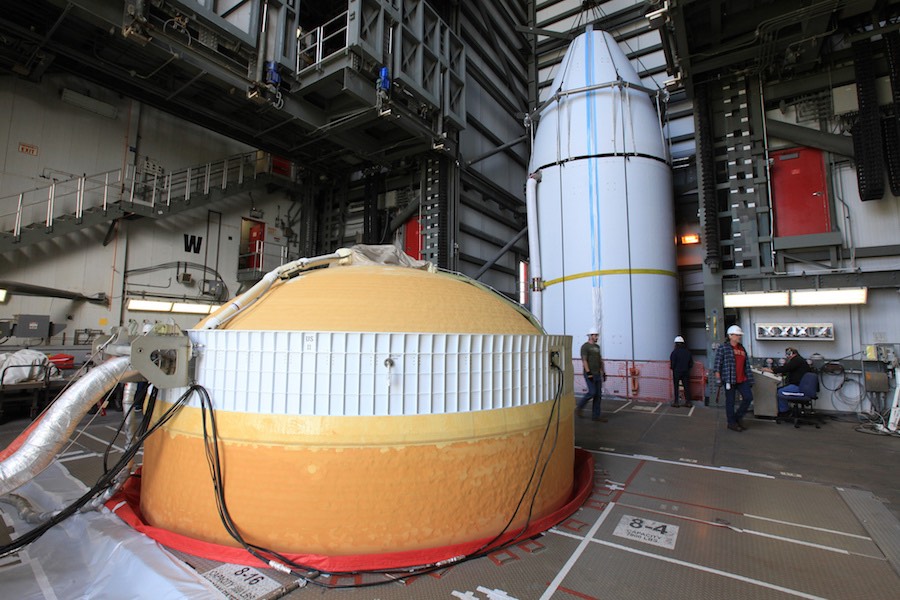
United Launch Alliance ground crews are putting the final touches on a Delta 4 rocket scheduled for blastoff Friday evening from Cape Canaveral with a U.S. Air Force communications satellite.
The 218-foot-tall (66-meter) Delta 4 rocket is set for liftoff at 6:56 p.m. EDT (2256 GMT) Friday, around a half-hour before sunset on Florida’s Space Coast. Friday night’s launch window extends until 9:05 p.m. EDT (0105 GMT).
The payload for the Delta 4 rocket is the Air Force’s Boeing-built WGS 10 communications satellite, which will join a fleet of wideband relay nodes stationed around the world in geostationary orbit more than 22,000 miles (nearly 36,000 kilometers) over the equator.
Friday evening’s mission will be the third launch of the year from Cape Canaveral, and ULA’s second mission of 2019, following a Delta 4-Heavy flight Jan. 19 from Vandenberg Air Force Base in California.
The Delta 4 launcher, covered in orange thermal insulation over its cryogenic propellant tanks, will blast off with 1.8 million pounds of thrust and head due east from Cape Canaveral, releasing four Northrop Grumman-built strap-on solid rocket motors around a minute-and-a-half into the flight to fall into the Atlantic Ocean. The four solid rocket boosters should leave a twisting exhaust plume in their wake as the Delta 4 climbs into space, adding to the spectacle for beachgoers and space enthusiasts hoping to see the launch.
The Delta 4 will jettison the protective aerodynamic shroud over the WGS 10 spacecraft nearly two minutes later, and the rocket’s core stage hydrogen-fueled RS-68A main engine, made by Aerojet Rocketdyne, will shut down at T+plus 3 minutes, 55 seconds.
Seconds later, the Delta 4’s lower stage will drop away, and the upper stage’s RL10B-2 engine will ignite for around 15 minutes to place the WGS 10 spacecraft in a preliminary parking orbit. A restart of the RL10B-2 engine at T+plus 29 minutes, 29 seconds, will raise the high point of the rocket’s orbit to an altitude of 27,536 miles (44,315 kilometers), setting up for deployment of the more than 13,000-pound (nearly 6,000-kilogram) WGS 10 satellite at T+plus 36 minutes, 50 seconds.
Like its predecessors already in orbit, the Air Force’s 10th Wideband Global SATCOM communications satellite will route classified and unclassified data and video, supporting U.S and allied forces around the world. Featuring a digital channelizer, WGS 10 will relay high-data-rate communications in X-band and Ka-band frequencies during a mission expected to last at least 14 years.
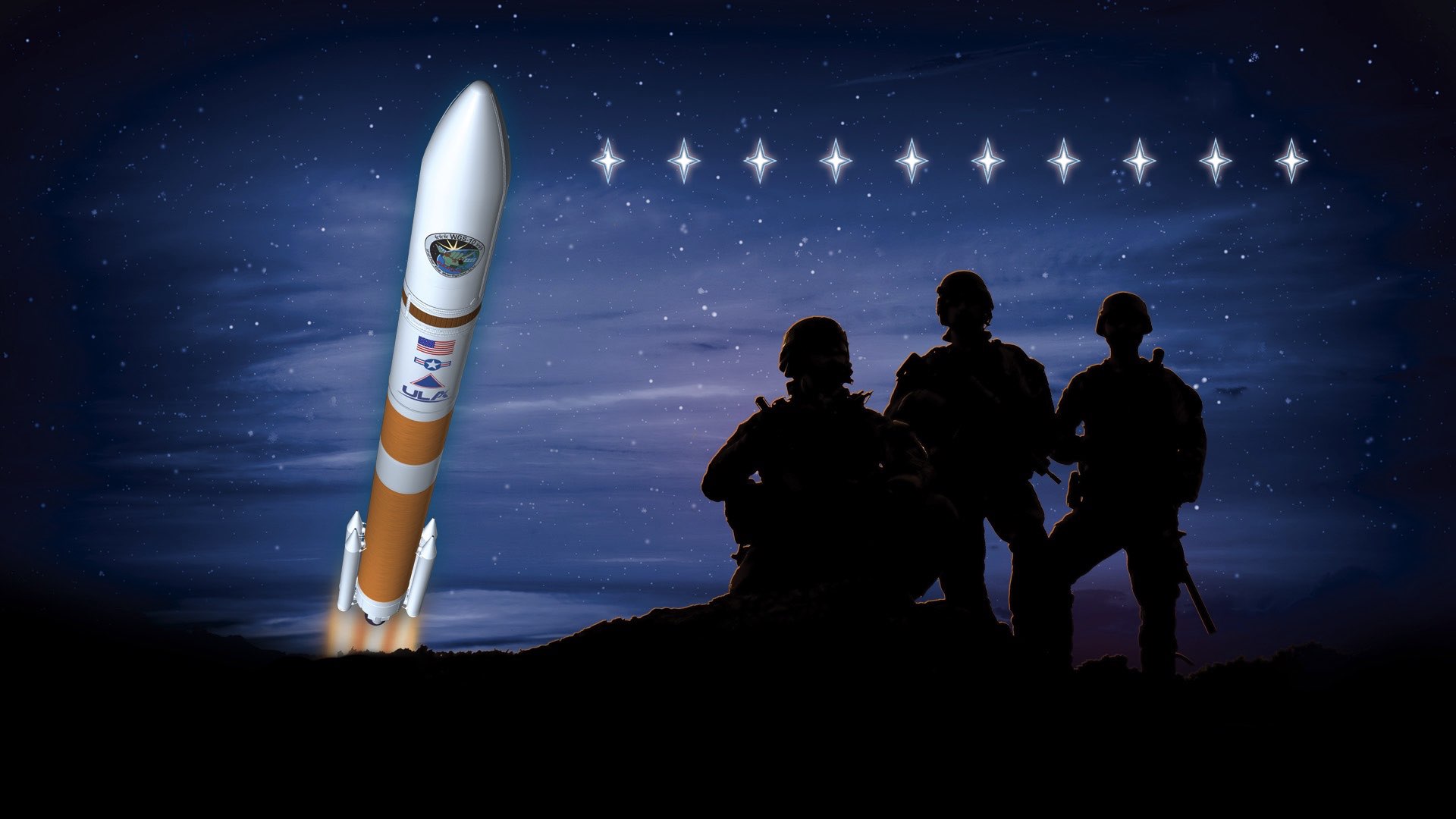
The nine previous WGS satellites all launched on ULA rockets — the first two on Atlas 5s in 2007 and 2009, and the following seven on Delta 4s.
“ULA is proud to be the exclusive launch provider for all ten WGS missions,” said Gary Wentz, ULA vice president of government and commercial Programs. “Our focus on mission success continually demonstrates that safely and reliably delivering these critical national assets is our highest priority.”
The weather outlook for Friday night’s launch looks favorable, with an 80 percent probability of acceptable conditions. The only potential weather concern forecast by the Air Force’s 45th Weather Squadron is the possibility of violating the cumulus cloud rule during the countdown.
“During the launch window, there is a slight possibility of an isolated shower early in the window as any showers that form inland could move back over the coast with southwesterly steering flow before diminishing shortly after sunset,” the Air Force’s forecast team wrote Thursday.
At launch time, forecasters predict scattered clouds at 3,000 feet, broken clouds at 28,000 feet, and winds of 12 to 16 knots from the south-southeast. The temperature at launch time is forecast to be around 74 to 76 degrees Fahrenheit.
If the launch is delayed to Saturday, weather conditions are expected to worsen as a cold front moves into Central Florida. There is a 60 percent probability of weather conditions violating one of the Delta 4’s launch weather rules Saturday.
The Delta 4’s launch with the WGS 10 communications satellite was previously scheduled for Wednesday, March 13. ULA announced a two-day delay Saturday “to allow for additional troubleshooting to resolve some off-nominal data indications.”
ULA and Air Force officials are scheduled to meet Thursday morning for a launch readiness review to clear the Delta 4 rocket for final countdown preparations.
Email the author.
Follow Stephen Clark on Twitter: @StephenClark1.

